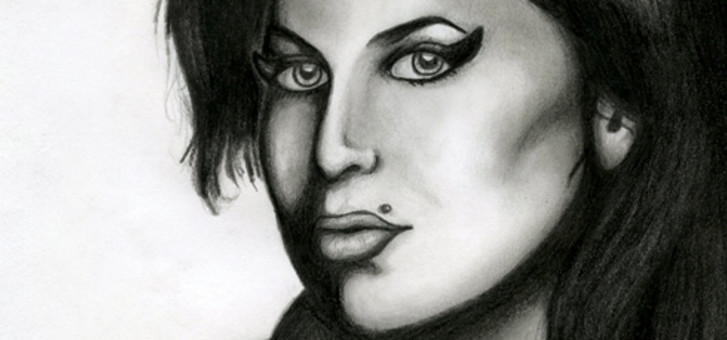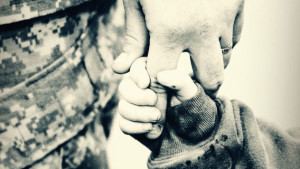No-one was expecting a retro American jazz sound to hit it big in the 2000s. And even if they were, they weren’t looking for it to come from of all places a small jazz club in London’s Soho entertainment district.
But that was before a girl named Amy Winehouse walked in.
She was tiny. She was young. And she was decidedly working class.
But when she opened her mouth, the world stood still. Not only for her powerful, soulful voice but for her poignant, delicately woven compositions. The songs she wrote were so personal, so honest, so transparent, that when you listened to her music you couldn’t help but feel like you knew her.
The person fans got to know was vulnerable, troubled. She struggled with alcohol; she struggled with rejection. She took fans into the darkest nights of her soul and somehow, when they arrived, they felt a sense of strange belonging. As if by understanding her pain it made their pain a little less unbearable.
And what a lot of pain she had—much of it stemming from her tumultuous relationship with Blake Fielder-Civil.
Amy met Blake in a pub in Camden. It was love at first sight. She was just 20 years old. Like a moth drawn to a flame, Blake’s bad boy swagger not only attracted Amy but it ultimately defined her.
Amy had always opposed the use of hard drugs. But the charismatic Blake changed that. Soon they were snorting cocaine together. And from cocaine she followed Blake’s lead down the dark tunnel into heroin.
Between the drugs and alcohol their mutually destructive relationship increasingly overshadowed Amy’s music. They were the perfect fodder for paparazzi who thrived on selling photos and stories of their drunken fights and drug-induced humiliations.
But in the middle of all the madness Amy’s second album—Back to Black—stormed the charts, becoming one of the best-selling albums of the 21st century.
The songs were inspired by Amy and Blake’s stormy relationship, with the title track focusing on Blake leaving Amy for another woman. Art was imitating the very real pain of Amy’s life. Newspapers began to publicly express concern for the singer's health, as did her father. A photo emerged of Blake and Amy leaving the Sanderson Hotel smeared in blood after a drunken argument.
Amy’s concerts degenerated into a series of embarrassing letdowns, with crowds turning nasty when she was too drunk to perform.
In the midst of it all Blake was convicted of beating a man in a pub and subsequently trying to bribe him to remain silent. He was sentenced to more than two years in prison.
At the time, Karen Heller of The Philadelphia Inquirer put it this way:
“She's . . . crashing headfirst into success and despair, with a codependent husband in jail, exhibitionist parents with questionable judgement, and the paparazzi documenting her emotional and physical distress.”
Despite the controversy—or maybe in part because of it—Amy’s Back to Black album won five Grammy Awards—a monumental achievement. Due to a drug arrest she was not granted a US visa to perform at the Grammy ceremony. So she performed via satellite. Viewers held their breath prepared for another Winehouse train wreck. To everyone’s surprise she wowed the world with her powerful voice and flawless performance.
For a moment, it appeared, Amy’s life was back on track.
But new footage emerged that managed to shock even the most hardened of Amy’s fans—she was filmed smoking what appeared to be crack. The person who sold the footage to the media? One of Blake’s pals.
In Amy’s biggest hit she sang, “They tried to make me go to rehab, I said, 'no, no, no'!” The song had arrogance in abundance. But in real life the emaciated Amy was finally checked into a rehabilitation clinic to kick her drug and alcohol habit.
It didn’t work.
Not long after getting out of rehab, Amy’s lifeless body was discovered at her Camden home. Her body, weakened from years of intense drug and alcohol abuse, had finally given in. She had died all alone.
It's hard to imagine a woman so talented, with so much to live for, dying so young and so abandoned. And yet for much of the world, the reason for Amy’s demise was obvious—the man she had met when she was just 20 years old.
Would Amy have ever messed with drugs if she hadn’t hooked her wagon to Blake? Even he doesn’t think so. Talking on The Jeremy Kyle Show in 2013, he said:
“I’ve admitted I was there when she had [heroin for the] first time, it was my doing. I don’t think she would have ever experienced it without me.”
Blake also admitted that the woman who depended on him for companionship, friendship and love was, ultimately, “the loneliest person I ever met”.
In a chilling admission in a UK television documentary, Blake said simply:
“I loved crack and smack more than I loved Amy.”
Amy’s music gave the world a clue as to why she had fallen so heavily into drug and alcohol abuse.
In her hit song “Rehab” she expressed her aching for true friendship:
“I don’t ever want to drink again,
I just need a friend."
She found immense fame. She found millions of fans. She found Blake whom she described as the love of her life. But she never found a real friend. And so she filled the hole in her heart with alcohol, heroin and crack.
Amy isn’t alone. We all have a hole in our hearts that can only be filled by the warmth of true friendship.
Not the kind of friendship that devolves into codependent self-destruction. But the kind of friendship that is all about building each other up; friendship that can be relied upon, that gives strength, hope, encouragement, deep and lasting love.
It’s unlikely we’ll find that kind of love in a pub. And it's certain we can never find it in a drug.
But there is a place to find real comfort, a place where hope burns bright, a place where love is deep, broad and all encompassing. It's in the arms of Jesus.
Our hearts ache when we remember the story of Amy Winehouse. She should have produced great art for decades. She should have blessed her family with love and support. She should have felt complete and cherished; she should have been whole. Instead all that is left is emptiness and the pain that goes with it.
But that doesn’t have to be us. We don’t have to die alone and abandoned by those in whom we put our faith. We can be accepted, forgiven, cherished and loved. We can have a Friend who loves us far more than we can ever love Him. We never need be alone.
<www.dailymail.co.uk/femail/article-2020352/Amy-Winehouse-dead-Blake-Fielder-Civils-mother-pleads-dont-blame-son.html>.
Amy Winehouse, Bio., <www.biography.com/people/amy-winehouse-244469#awesm=~oH0oMQoq1e9CkY>.
Amy Winehouse, The Guardian, <www.theguardian.com/music/amywinehouse>.
Interview with Blake Fielder-Civil , The Jeremy Kyle Show, 2013.
Amy Winehouse, The Untold Story, Channel 5 (UK).
Amy Winehouse, Wikipedia, <http://en.wikipedia.org/wiki/Amy_Winehouse>.
James Standish is editor of Adventist Record.







